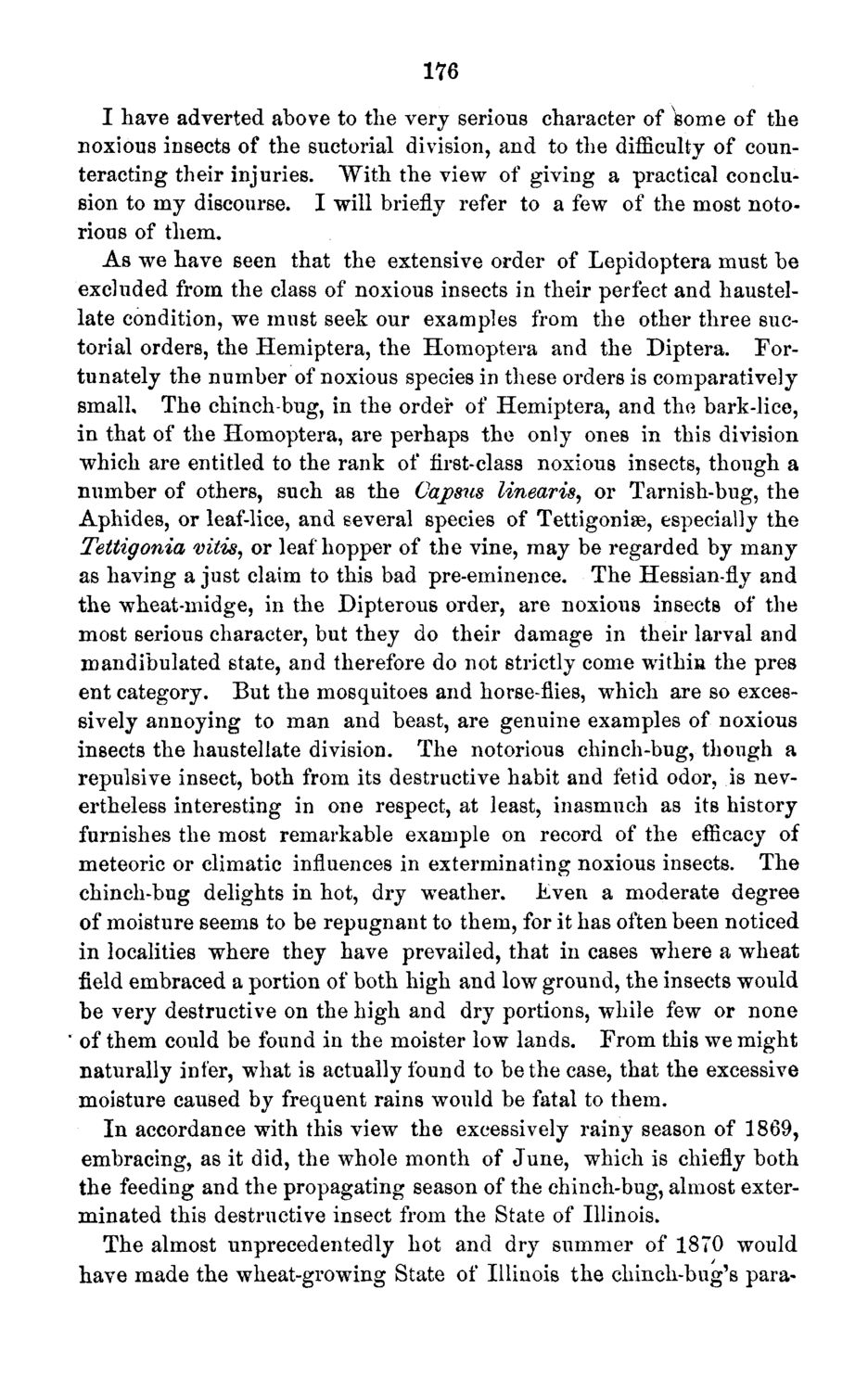| |
| |
Caption: Board of Trustees Minutes - 1871
This is a reduced-resolution page image for fast online browsing.

EXTRACTED TEXT FROM PAGE:
176 I have adverted above to the very serious character of some of the noxious insects of the suctorial division, and to the difficulty of counteracting their injuries. With the view of giving a practical conclusion to my discourse. I will briefly refer to a few of the most notorious of them. As we have seen that the extensive order of Lepidoptera must be excluded from the class of noxious insects in their perfect and haustellate condition, we must seek our examples from the other three suctorial orders, the Hemiptera, the Homoptera and the Diptera. Fortunately the number of noxious species in these orders is comparatively small. The chinch-bug, in the order of Hemiptera, and the bark-lice, in that of the Homoptera, are perhaps the only ones in this division which are entitled to the rank of first-class noxious insects, though a number of others, such as the Capsus linearis, or Tarnish-bug, the Aphides, or leaf-lice, and several species of Tettigoniae, especially the Tettigonia vitis, or leaf hopper of the vine, may be regarded by many as having a just claim to this bad pre-eminence. The Hessian-fly and the wheat-midge, in the Dipterous order, are noxious insects of the most serious character, but they do their damage in their larval and mandibulated state, and therefore do not strictly come within the pres ent category. But the mosquitoes and horse-flies, which are so excessively annoying to man and beast, are genuine examples of noxious insects the haustellate division. The notorious chinch-bug, though a repulsive insect, both from its destructive habit and fetid odor, is nevertheless interesting in one respect, at least, inasmuch as its history furnishes the most remarkable example on record of the efficacy of meteoric or climatic influences in exterminating noxious insects. The chinch-bug delights in hot, dry weather. Kven a moderate degree of moisture seems to be repugnant to them, for it has often been noticed in localities where they have prevailed, that in cases where a wheat field embraced a portion of both high and low ground, the insects would be very destructive on the high and dry portions, while few or none of them could be found in the moister low lands. From this we might naturally infer, what is actually found to be the case, that the excessive moisture caused by frequent rains would be fatal to them. In accordance with this view the excessively rainy season of 1869, embracing, as it did, the whole month of June, which is chiefly both the feeding and the propagating season of the chinch-bug, almost exterminated this destructive insect from the State of Illinois. The almost unprecedentedly hot and dry summer of 1870 would have made the wheat-growing State of Illinois the chinch-bug's para-
| |